Holige (puran poli) recipe is a traditional sweet flatbread made with all-purpose flour and has lentil stuffing. During festivals like Ganesha Chaturthi, Ugadi, and Varamahalakshmi Puja, and special occasions like weddings, one traditional sweet dish that is sure to be found on the menu is holige.
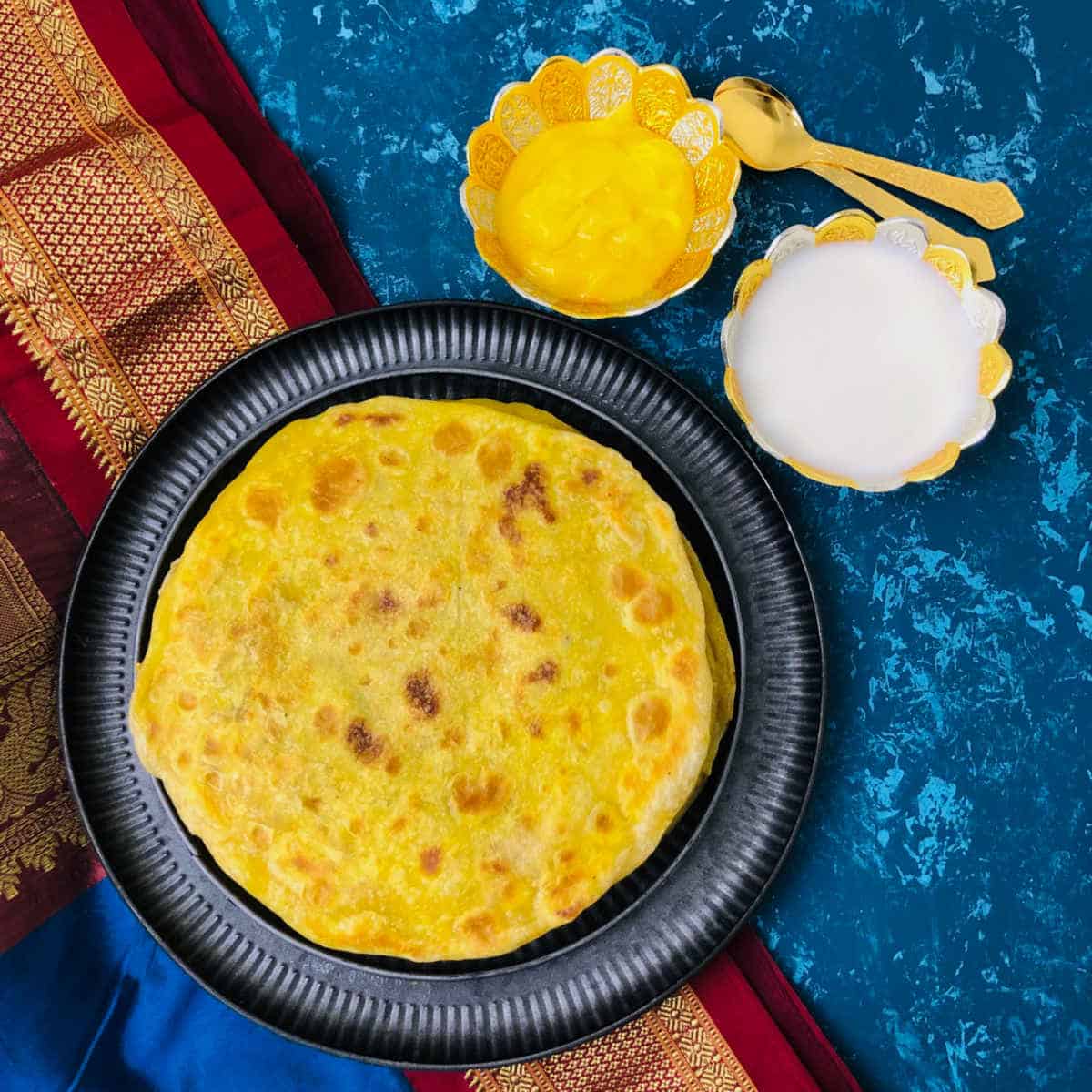
Holige (also known as Obbattu, Puran Poli, or Bobbatlu) is a traditional sweet dish that is popular in some parts of India, particularly in the states of Karnataka, Maharashtra, and Andhra Pradesh.
Holige is famously known as puran poli in Marathi, bobbattu in Telugu, poli in Tamil, and puran puri in Gujarati. They have slight variations depending on the region.
There are two types of stuffings used to make holige - one made with chana dal (Bengal gram) and the other made with coconut. The chana dal stuffed dish is called bele holige. The chana dal stuffing is called hoorna, and the dough is called kanaka. Coconut stuffed dish is called kayi holige, where coconut and jaggery are cooked together and used as the stuffing.
Why you will love this holige recipe?
- Authentic and traditional: This holige recipe follows a traditional and authentic method that has been passed down through generations of Indian families, and it was handed down to me.
- Easy to follow: While this recipe may seem intimidating at first glance, it is actually very easy to follow. I have included clear step-by-step instructions that will guide you through each stage of the process.
- Tips and tricks: I have included all the necessary tips and tricks to ensure that it turns out perfectly.
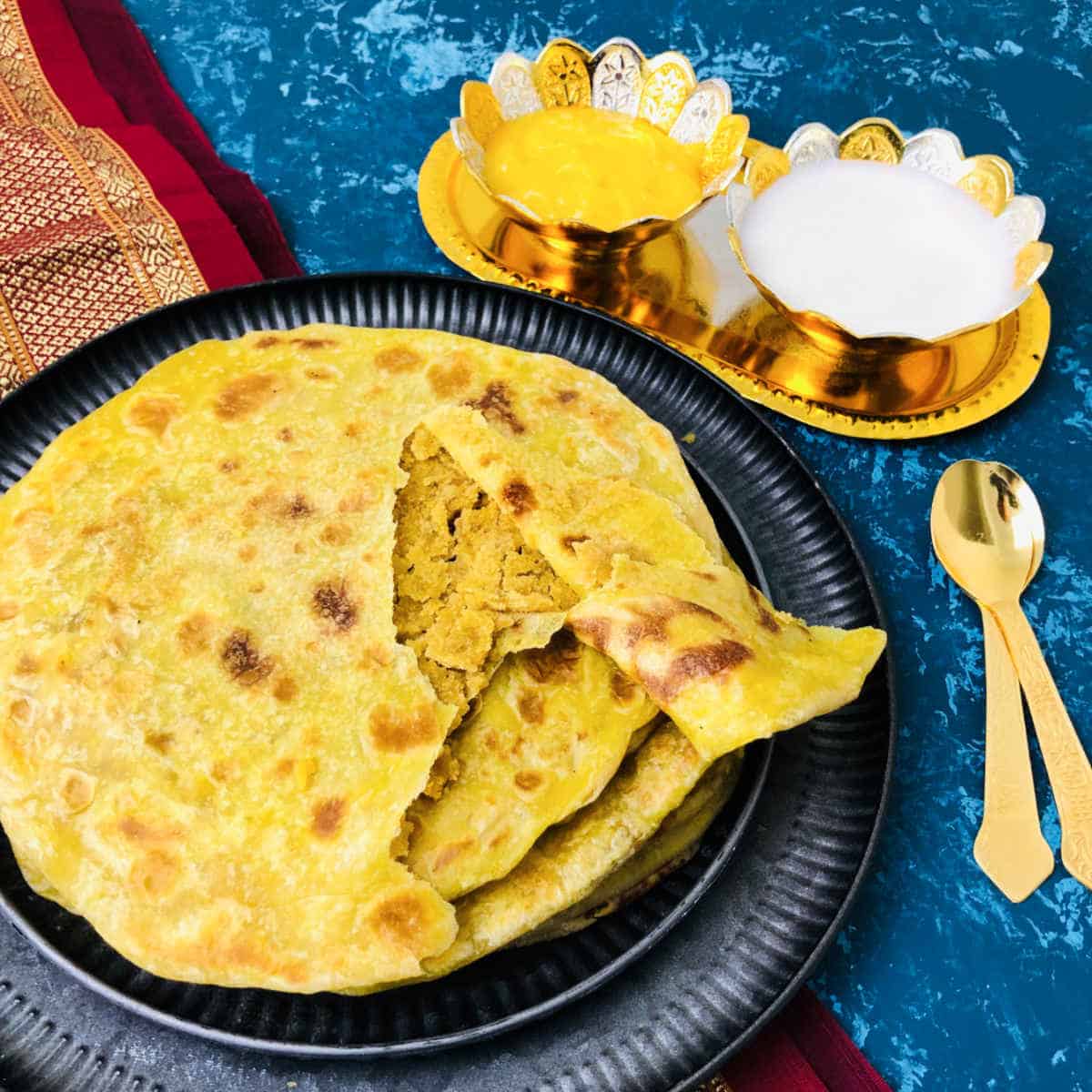
Ingredients to make holige / puran poli
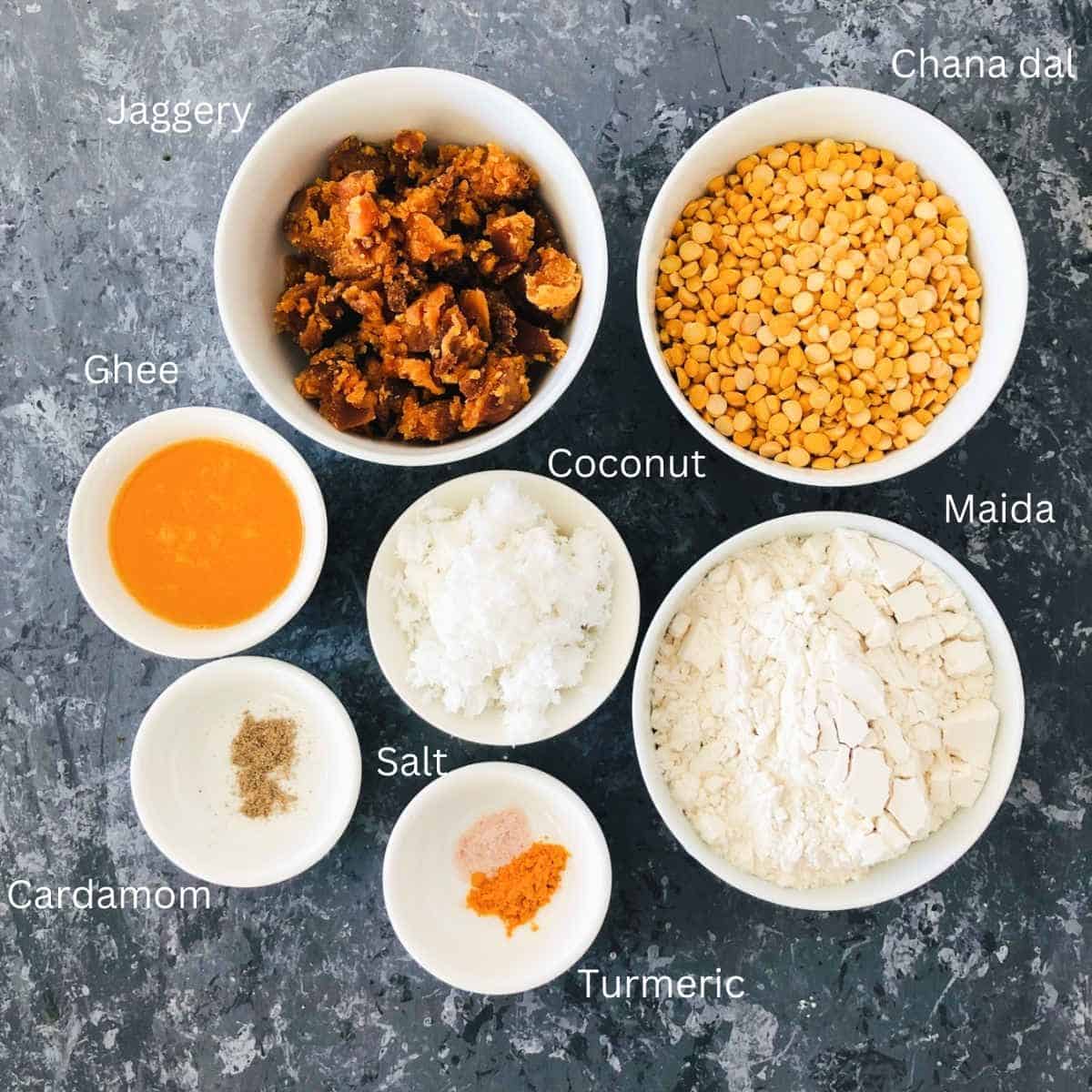
Plain flour: I use plain flour (maida) to make the dough. You can also use whole wheat flour (atta) to make them. However, atta will make the holige (obbattu) slightly dense.
Turmeric and salt: They are added to the dough in very small quantities. Turmeric gives a beautiful golden hue to the bread. Do not skip the salt, as it is needed to balance the taste of the final dish.
Ghee: I make the dough using ghee. Traditionally, when food is prepared as an offering to the deity during festivals, they are made with ghee. It may be replaced with regular cooking oil.
See the recipe card for full information on ingredients and quantities.
Step-by-step instructions
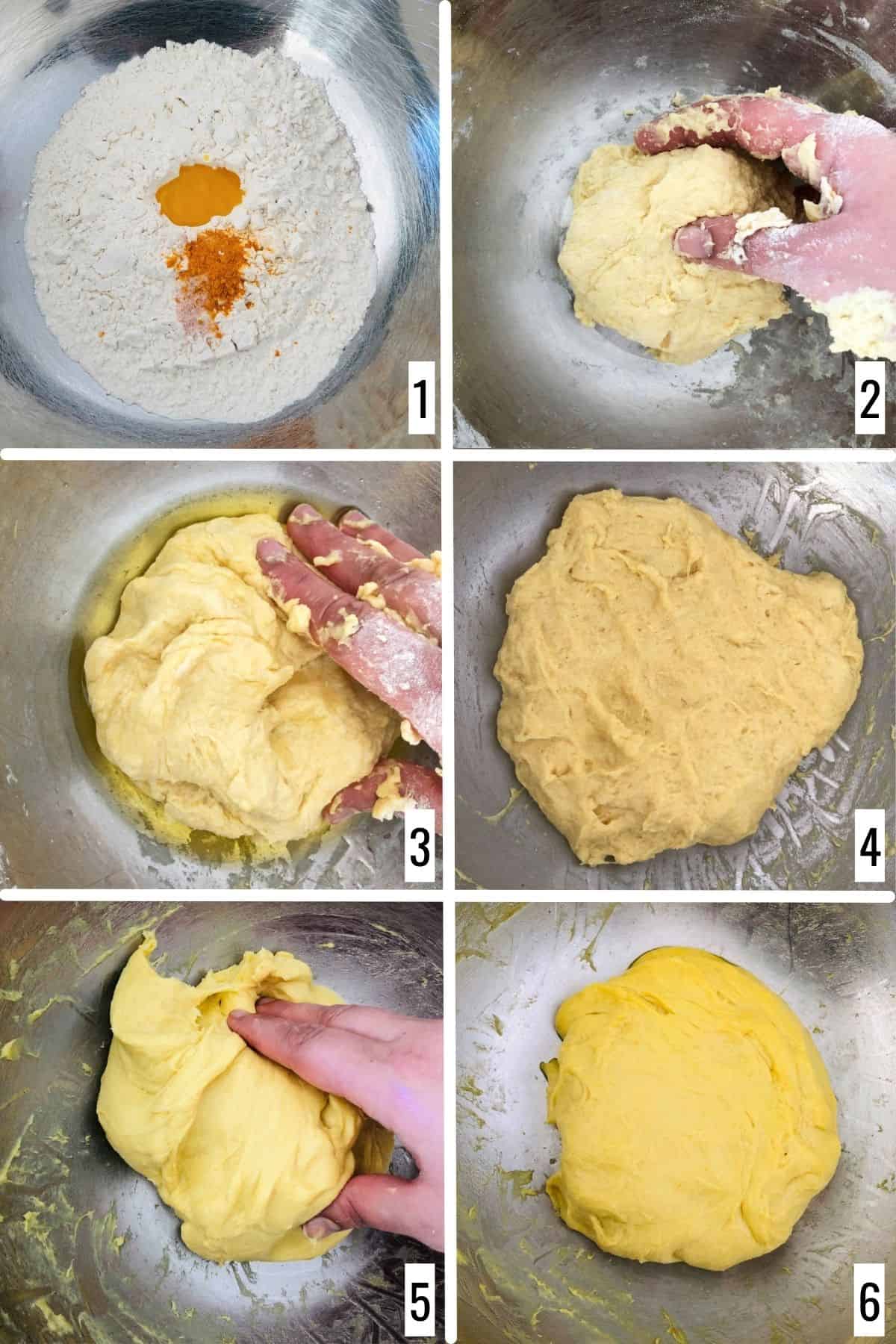
Step 1: Mix together flour, turmeric, and salt in a large bowl. Add 1 teaspoon of ghee and crumble the flour. Slowly add water and knead into a soft dough (images 1 and 2).
Step 2: Add the remaining ghee slowly and knead the dough for 8-10 minutes until the dough becomes non-sticky and soft. Cover with a damp kitchen towel and let the dough rest for 6-8 hours (images 3 and 4).
Step 3: While the dough is resting, keep kneading it for a few minutes every 2 hours (images 5 and 6).
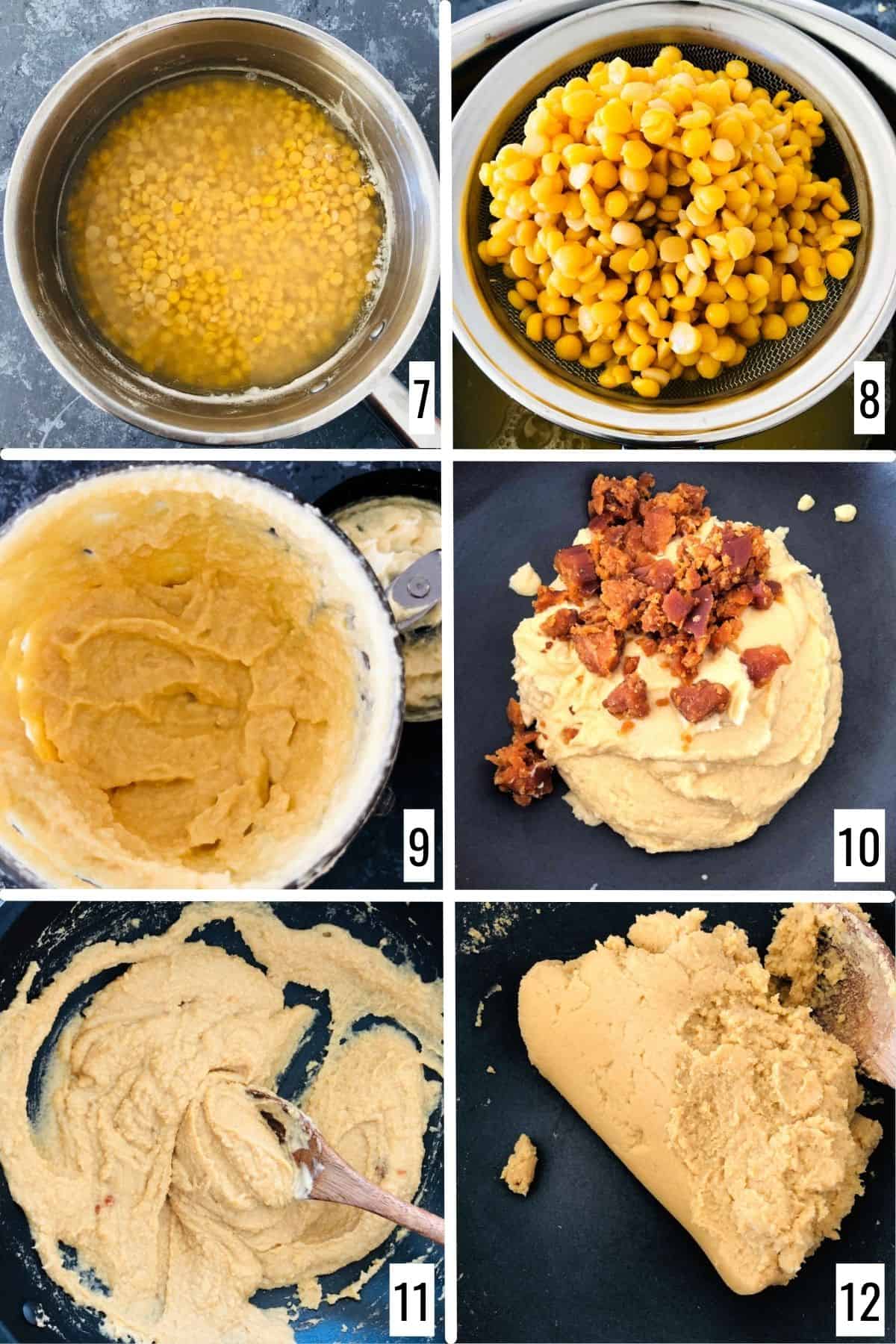
Step 4: Wash the chana dal and soak it for 1 hour. Rinse it thoroughly, add fresh water, and boil until the dal is completely cooked but not mushy. Strain the boiled dal and completely remove the water (images 7 and 8).
Step 5: Grind together the boiled chana dal and coconut using minimal water to make a thick and smooth paste (image 9).
Step 6: Now in a thick bottom pan, add the dal paste and jaggery. Cook the hoorna until all the moisture dries out and it comes together (images 10 and 11).
Step 7: Add cardamom powder and mix well. Let it cool completely (image 12).
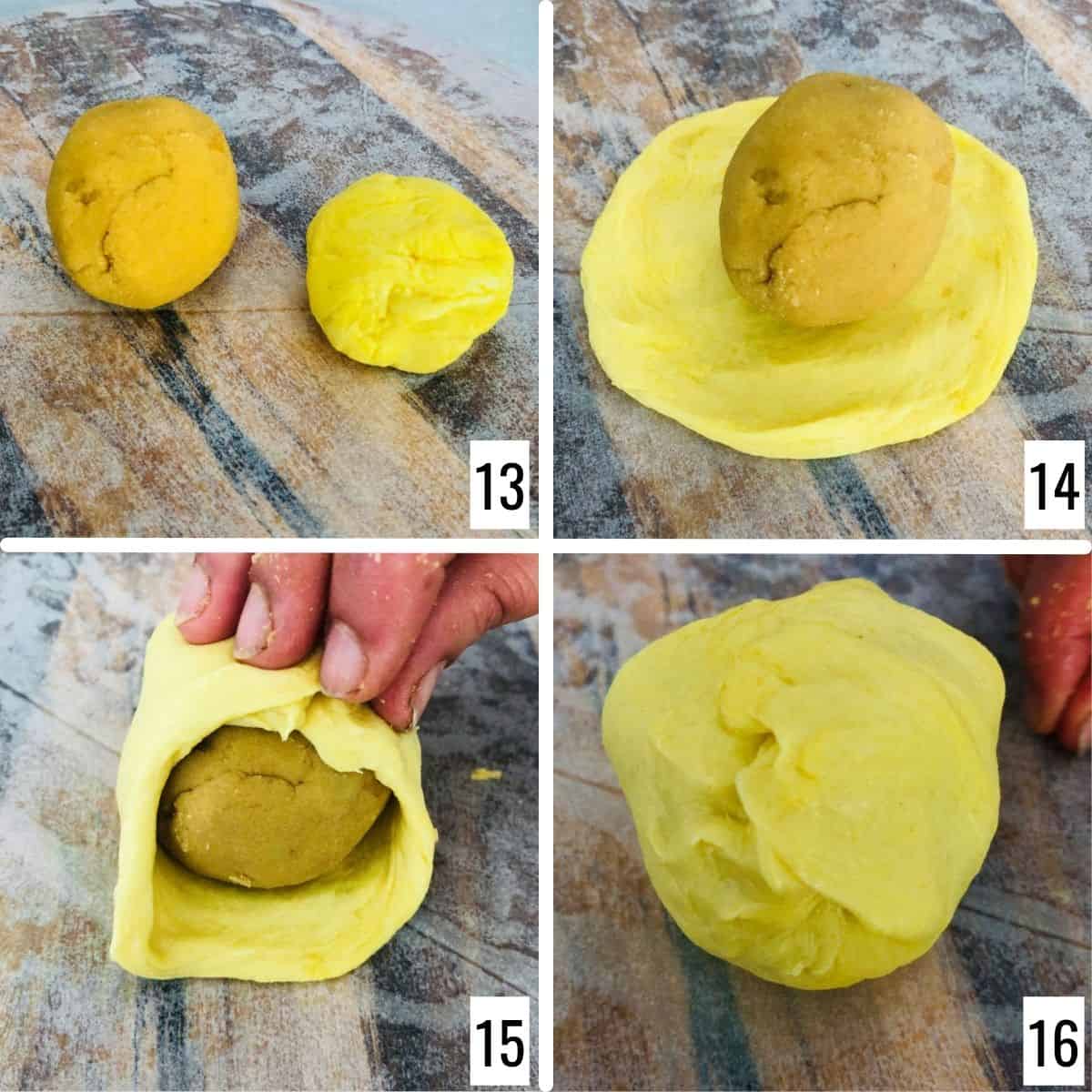
Step 8: Once the dough is rested, pinch out a small portion of the dough. Make a ball of cooled hoorna double the size of the dough. Take the dough and place it on a baking sheet. Spread it into a 4-inch disc using your hands and place the hoorna on it (images 13 and 14).
Step 9: Gently pull the dough and cover the hoorna. Seal the top (images 15 and 16).

Step 10: Spread the stuffed dough into a thin round disc using your fingers (images 17 and 18). Alternatively, place another baking sheet on top of the stuffed dough and roll it into a thin disc using a rolling pin (images 19 and 20).
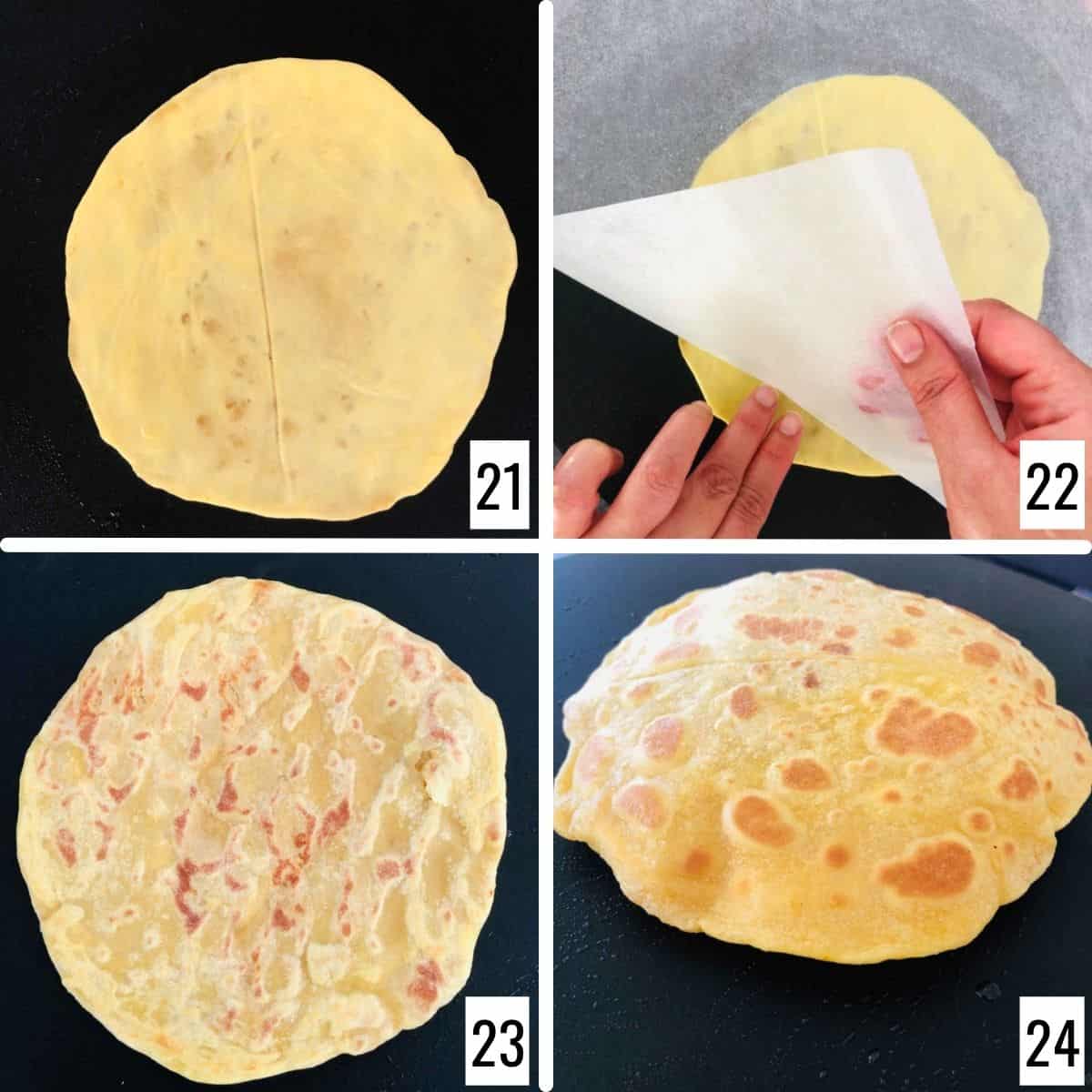
Step 11: Flip the holige onto the tawa and carefully remove the baking sheet (images 21 and 22).
Step 12: Cook for 1-2 minutes. Cook both sides until the holige is fully done and golden brown (images 23 and 24).
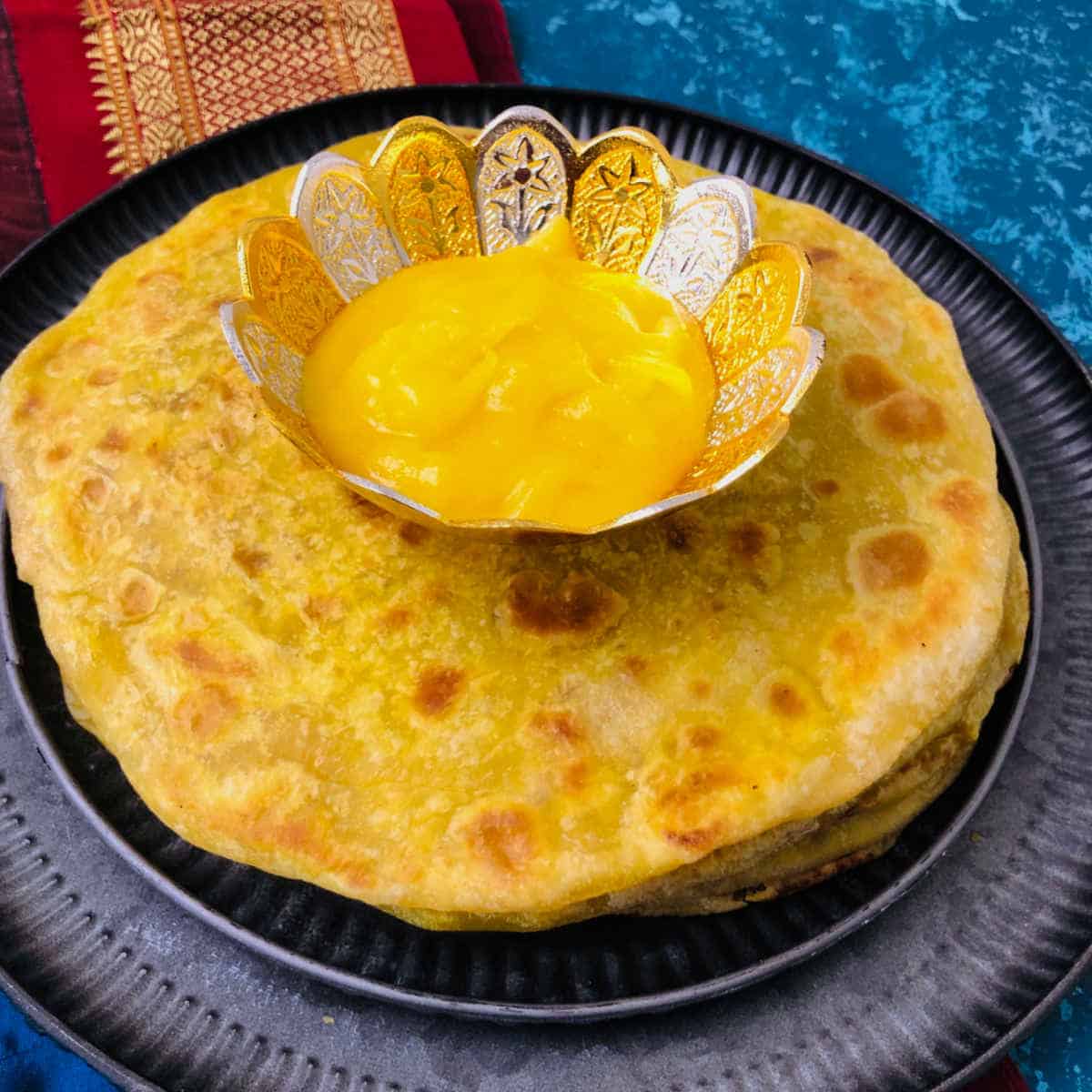
Expert Tips
The measurements I have used in this recipe give 8-9 holige. You can double or half the recipe as per your requirement.
Don’t shy away from using ghee while making the dough for an authentic holige. If you reduce the amount of ghee, the obbattu will not be soft. When incorporating the ghee into the dough, pinch the dough with your fingers and rub the ghee in. You will know the dough is ready when the ghee is fully incorporated, and the dough is soft yet non-sticky.
Do not overboil the chana dal. They must be cooked through, yet not mushy. If they are overcooked, it will be difficult to separate the dal and water.
While stuffing the dough, make sure the stuffing is double the amount of dough. Place the stuffing onto the dough and gently pull the dough to cover it (see pictures above). A well-made dough will be elastic and not tear when covering the stuffing.
Click here to see how to make traditional ukadiche modak for Ganesh Chaturthi. You can use this chana dal filling to make easy and delicious fried modak.
Recipe FAQs
The amount of ghee or oil used in holige orobbattu dough is more than puran poli. Puran poli are rolled slightly thick, whereas obbattu is made very thin by patting with fingers. Also, turmeric is not used in puran poli dough.
Traditionally, it is served with ghee and warm milk. You can also serve it with holige saaru, which is made using the water used to boil the chana dal. It is also served with payasa (kheer).
They will turn hard if you use less ghee/oil. For soft, melt-in-mouth holige, do not cut back on ghee.
Make sure the dal is ground into a very fine paste. If there are any bits that are not ground, the dough will tear when patting/rolling.
Honestly, no. Resting the dough is the key to getting a soft texture. It is best to plan ahead and give enough time for the dough to rest well. You can also knead it at night and let it rest overnight.
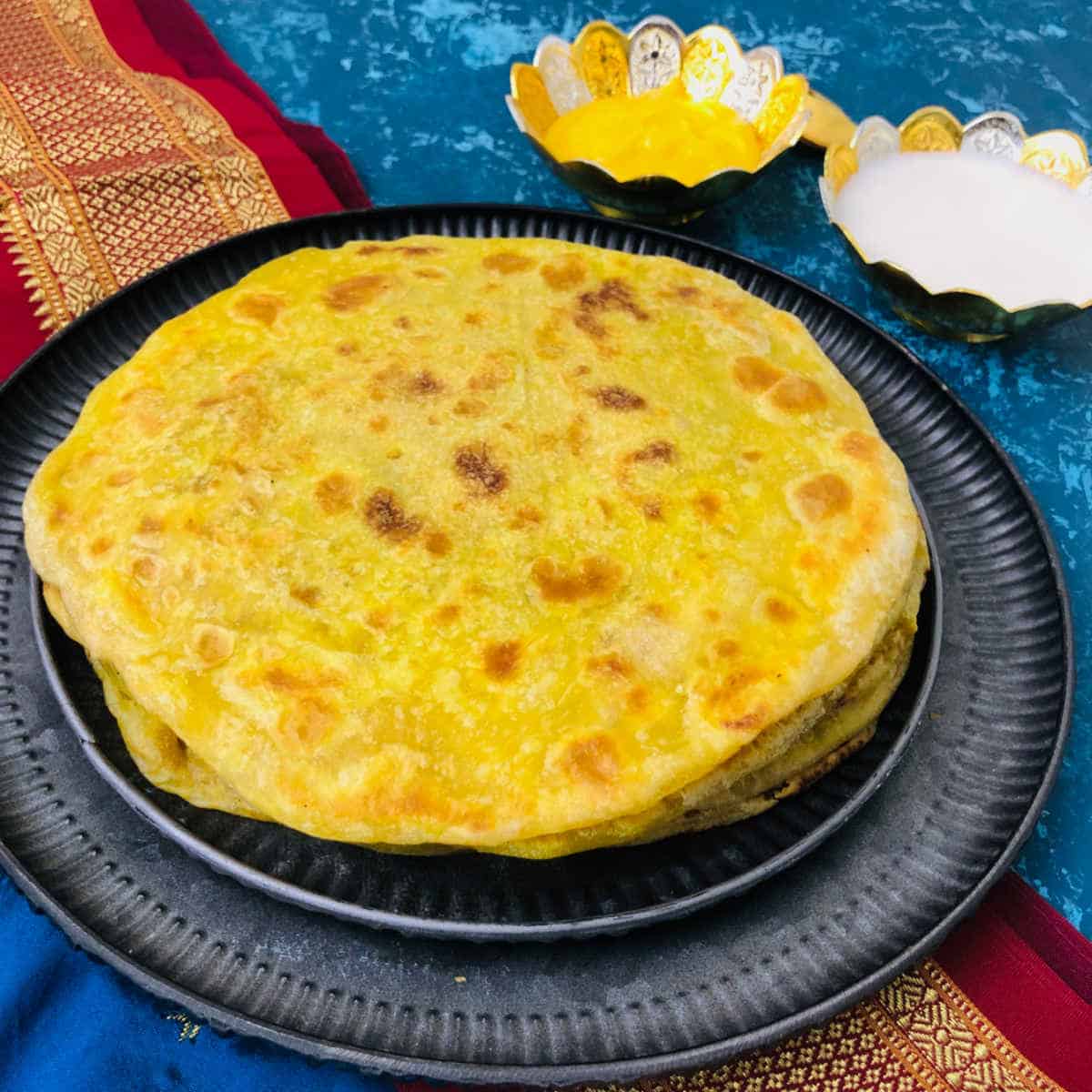
More authentic Indian desserts
If you tried this Puran Poli / Holige Recipe or any other recipe on my website, please leave a ? star rating and let me know how it went in the ? comments below.
Recipe card

Holige / Puran Poli
Ingredients
For the dough:
- 1½ cups all-purpose flour plus extra for dusting
- ¼ cup ghee plus extra for roasting (use store-bought or homemade ghee)
- ½ teaspoon turmeric powder
- ½ teaspoon salt
- Water to knead the dough
For the stuffing:
- 1 cup chana dal Bengal gram
- 1 cup jaggery
- ¼ cup coconut grated
- ½ teaspoon cardamom powder
Instructions
To make the dough:
- Mix together flour, turmeric, and salt in a large bowl. Add 1 teaspoon of ghee and crumble the flour.
- Slowly add water and knead into a soft dough.
- Add ¼ cup of ghee slowly and knead the dough for 8-10 minutes until the dough becomes non-sticky and soft.
- Cover with a damp kitchen towel and let the dough rest for 6-8 hours.
- While the dough is resting, keep kneading it for a few minutes every 2 hours.
To make the hoorna (chana dal stuffing):
- Wash the chana dal and soak it for 1 hour. Rinse it thoroughly, add fresh water, and boil until the dal is completely cooked, but not mushy.
- Strain the boiled dal and completely remove the water.
- Grind together the boiled dal and coconut using minimal water to make a thick and smooth paste.
- Now in a thick bottom pan, add the dal paste and jaggery. Cook on medium heat stirring in between.
- Continue to cook until all the moisture dries out and it comes together as a mass.
- Add cardamom powder and mix well.
- Hoorna or stuffing is ready. Let it cool completely.
To make the holige:
- Knead the rested dough and make small balls (8-9).
- Make a ball of cooled hoorna double the size of the dough.
- Take the dough and place it on a baking sheet. Spread it into s 4-inch disc using your hands. Place the hoorna and cover it with dough.
- Place the stuffed dough on baking paper or parchment paper and spread it into a thin round disc using your fingers. Alternatively, place another baking paper on top of the stuffed dough and roll it into a thin disc using a rolling pin.
- Heat a tawa or griddle. Flip the holige onto the tawa and carefully remove the parchment paper. Cook for 1-2 minutes.
- Flip the holige, add a teaspoon of ghee and cook both sides until they are completely done and golden brown.
- Serve hot holige with ghee and warm milk.
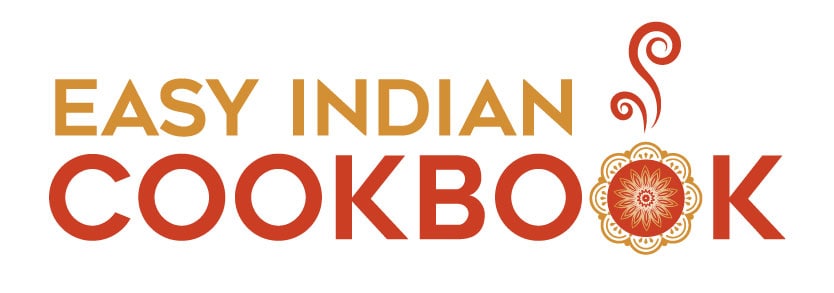
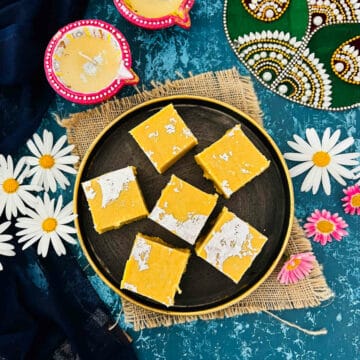
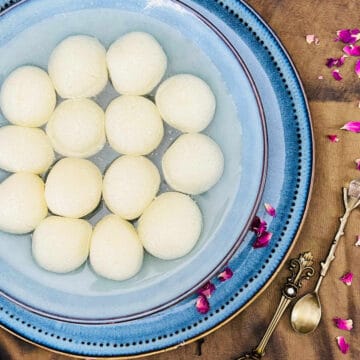
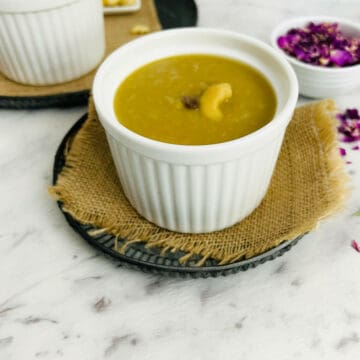
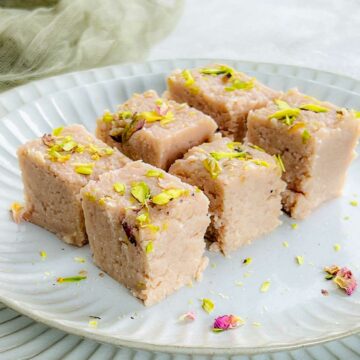
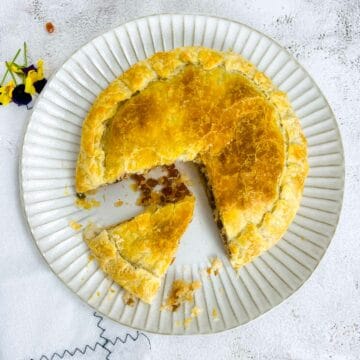
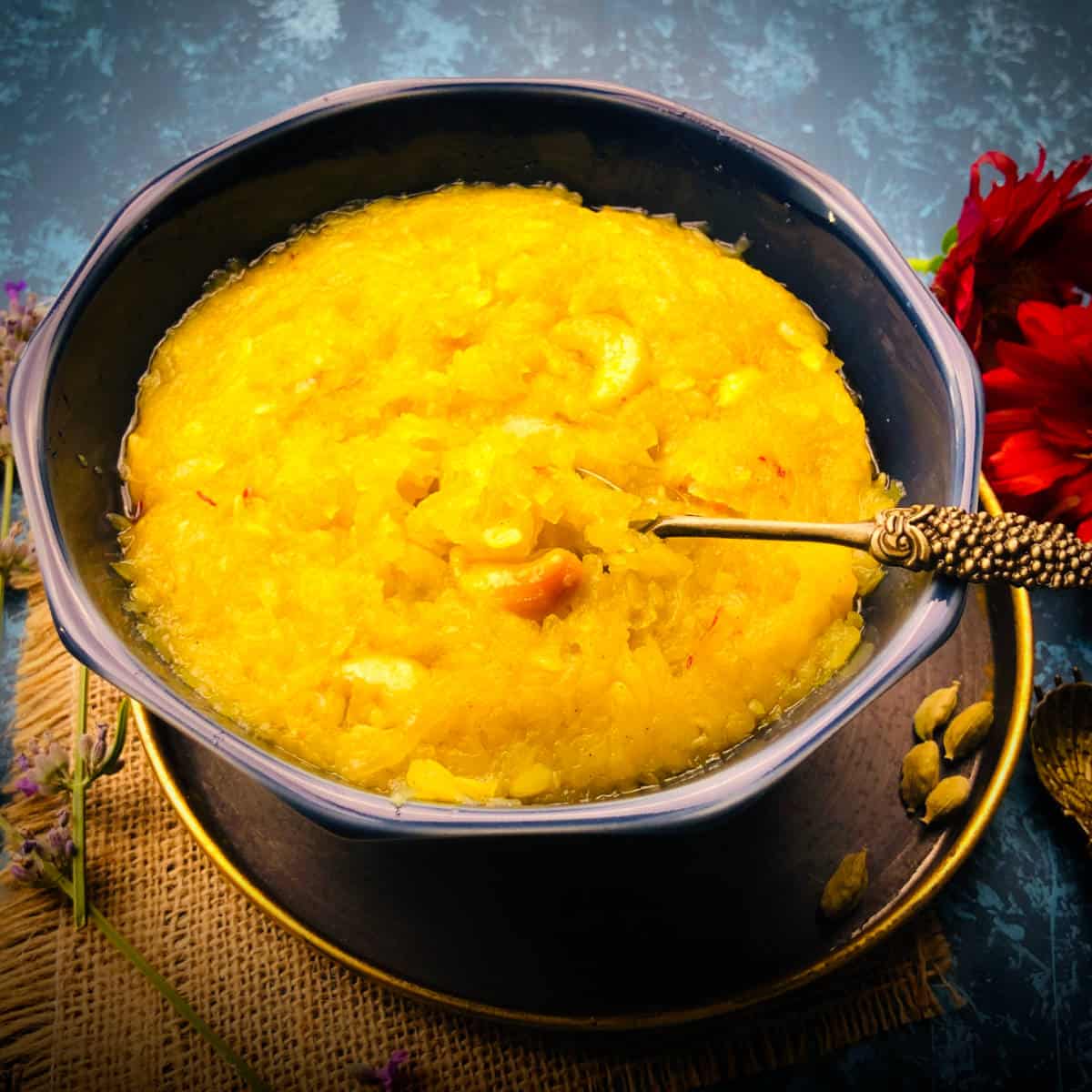
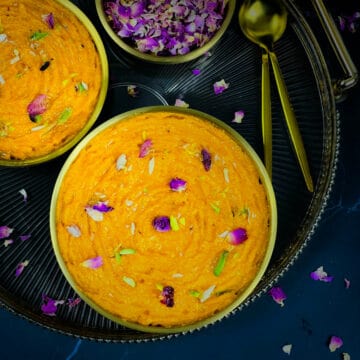
Comments
No Comments